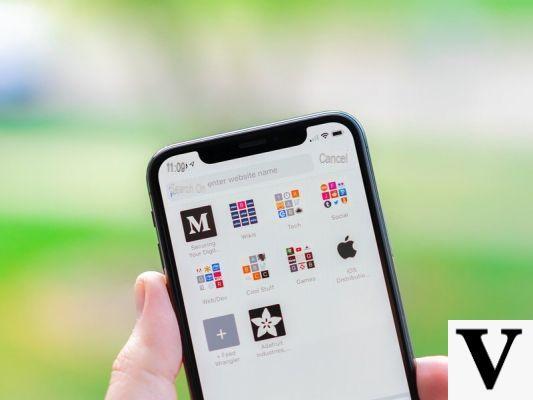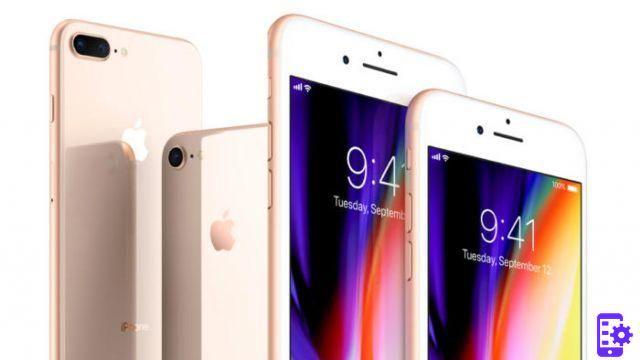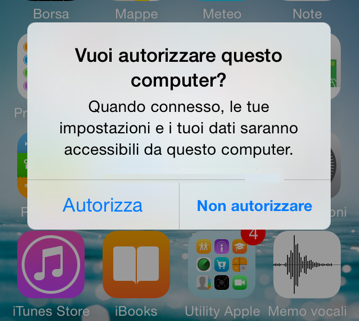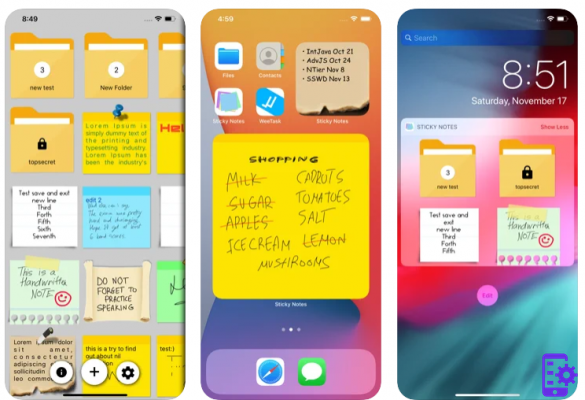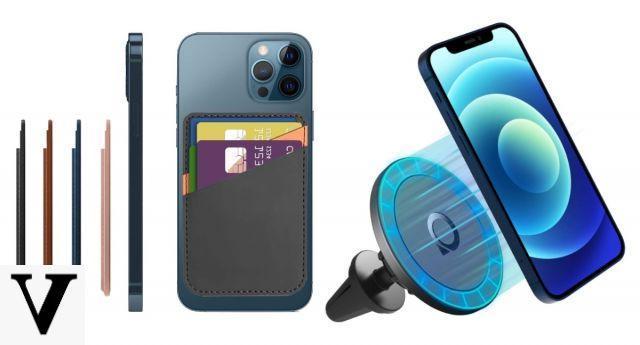Apple has constantly improved the functionality "photo”On the iPhone. This certainly depends on the hardware components of the device that make up the camera and the software that makes use of the camera. The new iPhone 5S certainly has other impressive new features and improvements achieved thanks to the system iOS 7, which allow you to edit and share photos for a better overall experience with all supported devices.
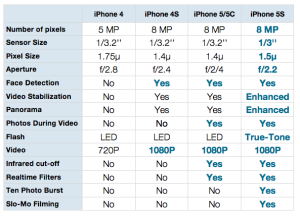
Index
- iOS 7 Camera App
- iOS 7 Photo App
- iPhoto per iOS
More accessible than ever, Apple's camera app in iOS 7 has some new features. You can access the Camera app from the app icon on the home screen. It is also accessible from anywhere by tapping the camera button in the new command center. You can also continue to use the usual controls to take photos.

A new photo mode has been added to the previous photo and video mode. If you happen to have an iPhone 5s, you will also see the new slow motion mode which allows you to record video at 120 frames per second. When it is also set in the photo mode, and there is now a button that looks like three overlapping color filters. Tapping it will show nine frames arranged in a 3X3 grid. With the iPhone 5, 5C and 5S, you can see in real time how the different filters are applied. They are the following: Noir, Chrome, Istantanea, Tonale, Transfer, Mono, Process Fade and even "None".

Tap and hold the shutter button and you'll get up to ten photos per second in burst mode. Low-light photos look better on the iPhone 5s, and with its advanced image stabilizer and new technology, you can merge the less blurry parts of four photos into one. The same goes for panoramas, as they will now be at 30 frames per second and by adjusting the exposure you pan across the whole scene you're shooting with the iPhone 5s.

The Photo app is still the fastest way to access the photos you have on your iPhone. Of course photos taken with the built-in Camera application will appear in the Camera Roll, but with iOS 7 there are also third-party applications that can now save photos to a special album just like Instragram or Diptic. This only works if the third party app takes advantage of this new feature. Photo collections can be organized into date ranges, or “moments” ie photos taken in certain locations on a specific date. These new sorting modes also include photos obtained from shared photo streams, but not from others' shared photo streams.

iCloud's Shared Photo Streams, accessible from the Photo app, has been updated with the release of iOS 7. Now you can share the videos on your Photo Album as you do with photos. Additionally, other iCloud members you invited photos to will be able to post their photos and videos to the Photo Stream. This makes it very easy to set up a single shared event on Photo Stream. The other big change is being able to open your Photo Stream on iCloud.com, even to friends and family who don't have an iCloud account. Once your iCloud Photo Stream goes public, you can also share a link to the site with your Twitter or Facebook account.

In addition to iMessage, Mail, iCloud, Flickr, and Twitter and Facebook sharing options, iOS 7 also added support AirDrop (http://support.apple.com/kb/HT5887) for the Photo app. AirDrop is a way to quickly share files between different devices. Not all devices that are capable of running iOS 7 support AirDrop, only the iPhone 5, iPad 4, iPad Mini and XNUMXth generation iPod Touch. To use AirDrop, both devices must have both Wi-Fi and Bluetooth connections turned on. Also, you need to determine exactly what to share with whom: anyone, everyone, or just the individuals you have in your contacts.

With the Photo app you can also have a quick and easy way to make changes to your photos. Crop, rotate, red-eye removal and auto enhance are already available, plus the new ability to apply a set of filters available for the Camera app: Noir, Chrome, Snapshot, Tonal, Transfer, Mono, Fade. For videos the only option you have to edit the videos is to apply cuts (video splitter). For more advanced photo and video editing features, you need to turn to applications like Apple's iPhoto and iMovie.
iPhoto per iOSWhen Apple announced the availability of iOS 7 and the two new iPhones, the 5c and 5c, Apple also announced that all new iOS device purchases will include a copy of iPhoto and iMovie. From now on, these applications will forever be part of the standard applications that come with your iPhone, iPad and iPod Touch. Just like Apple already does on OS X with every Mac you buy.

IPhoto's editing features are much more advanced than those included in the Photo app. Beyond the “Auto Enhance” feature featured in Photo app, iPhoto lets you control the photo's contrast, brightness and color saturation. There are also controls for increasing green in a scenery, blue in the sky, and skin tone tints. Then there are tools, like brushes with which you can selectively saturate or desaturate, lighten or darken, and refine or soften each photo. You can also straighten a photo from as little as one degree up to as much as 90 degrees.

If the particular iOS device does not support the new AirDrop feature of iOS 7, there is an iPhoto feature that you can use. iPhoto has implemented a means of sharing photos between iOS devices. From iPhoto you select the photo or photos you want to share with another iOS device and with one click, sharing takes place, even via Facebook or Twitter. IPhoto must be present, installed and running on the other iOS device to be able to share the photo. This is a great way to take photos with your iPhone's camera, and then edit them on a larger screen like an iPad.

iPhoto has an official feature where you can customize a photo collection by creating a "story". The name of this function is “Journal” and it allows you to organize your photo collection into a series of pages, each page with its own title and entry. You can also add non-photographic elements such as notes, comments, weather, calendars and maps. At the end, it is possible to publish the “Journal” on iCloud and share the link with relatives and friends.
34






